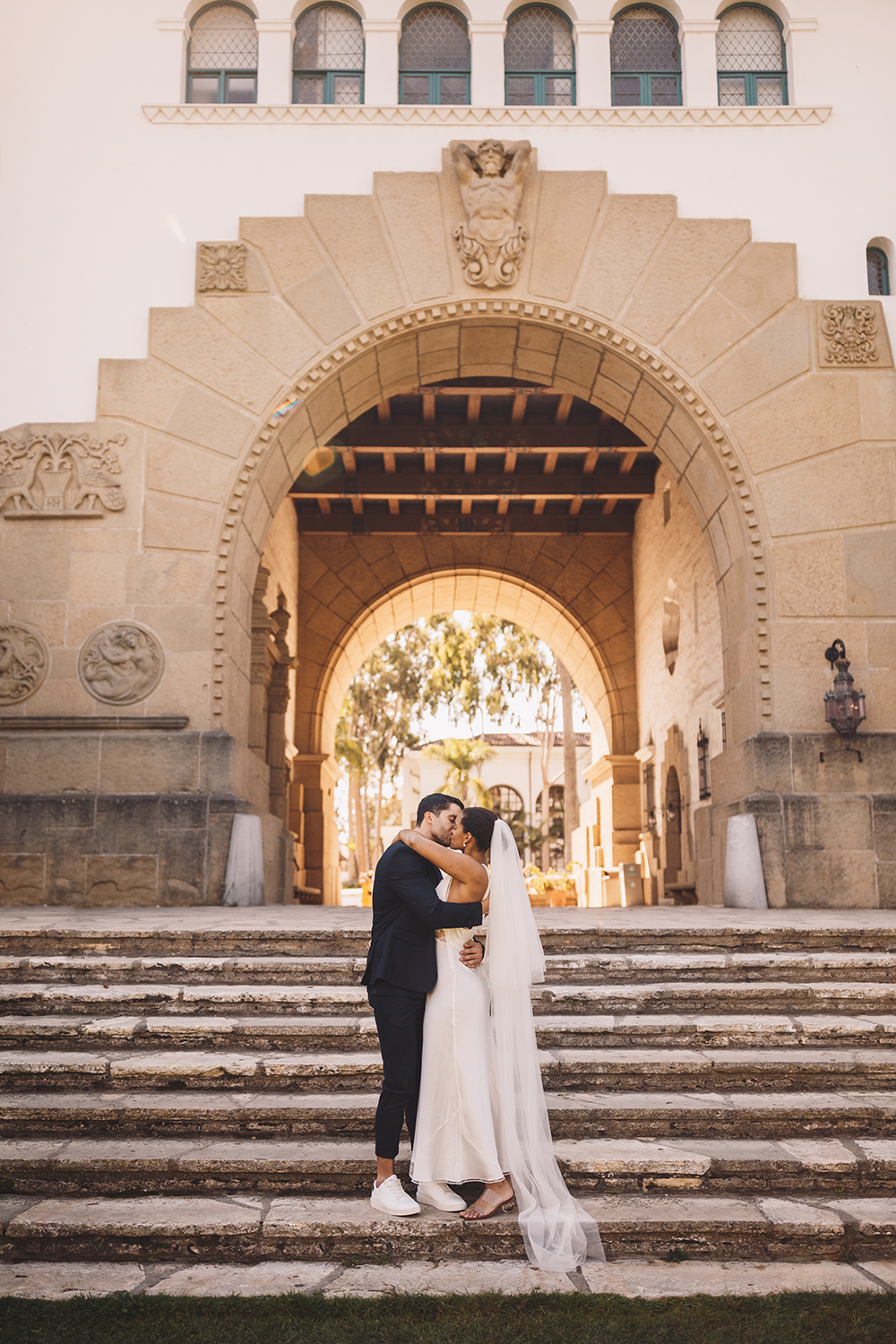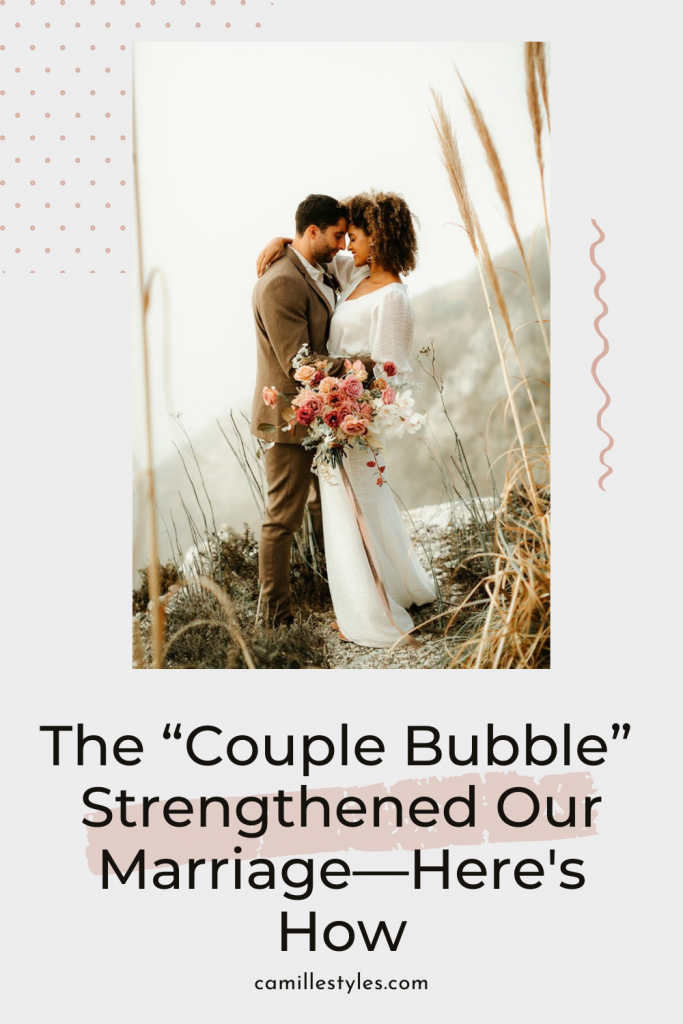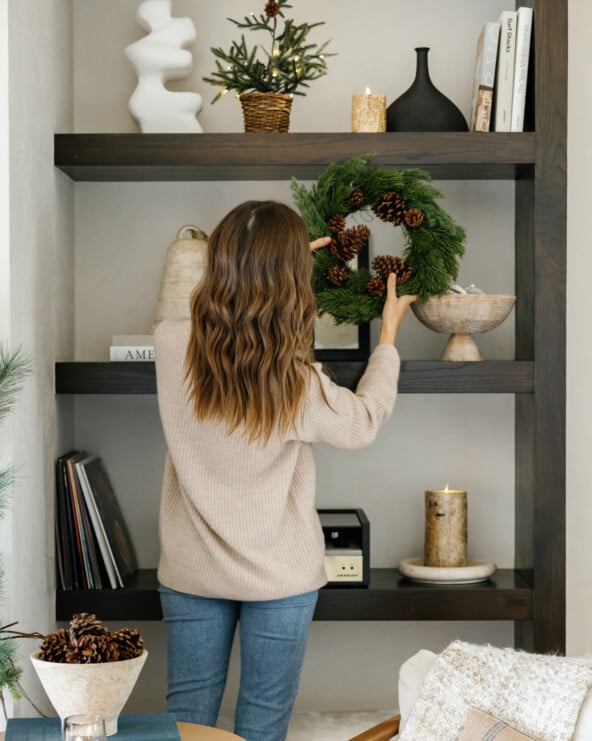I discovered The Couple Bubble after my recently wedded husband and I dove into premarital counseling. After a decade of being together, we’d never broached the subject, but through the process, we’ve learned that couple’s counseling, in general, is extremely important. It aids in sustaining the health of a relationship; provides a fresh perspective; analyzes patterns, attachment styles, and personality differences; and teaches you how to navigate it all. We were lucky enough to find an incredible therapist off the bat who was able to address my husband’s apprehension while fulfilling my eagerness to get the ball rolling. After our second session, she recommended we read a book together called Wired for Love by Stan Tatkin.
The fact is: we all play different roles within our romantic relationships, oftentimes shaped by our early attachments (familial bonds), behaviors, personalities, and love styles. As time goes on, we settle into dynamics that feel familiar and comfortable, even if they’re not benefitting us or our partner.
So what is a Couple Bubble exactly? Well, by definition, the Couple Bubble is “a term that describes the mutually constructed membrane, cocoon, or womb that holds a couple together and protects each partner from outside elements. A Couple Bubble is an intimate environment that the partners create and sustain together and that implicitly guarantees specific promises.”
Oftentimes, we are overly aware of how life can affect our relationships: death, birth, temptation, addiction, career hardship, personal development, the list goes on—we forget about the influence and control we have, within us. When we get married we say important vows, but as we carry out that marriage, we often forget what they were, and we neglect to make new ones.
Instead of committing yourself only at the ceremony, I encourage you to regularly remind your partner of the promises you have made and will keep. Note how they evolve and ensure that they come before anything or anyone else. As Tatkin so simply and truly puts it: the relationship comes first.
Read on to learn more about how you can create and maintain a sphere around your relationship.
Images by Alex Phillips.

We’ve Made A Safe Zone And We’re Keeping It That Way
Stankin explains in his introduction that we live in a highly complex world filled with distractions and grandiose events. (For instance, we have the ability to travel to the other side of the world. Wow.). When those privileges break down, as they currently are to a large extent, we throw a fit. We turn to guidebooks, manuals, and self-help books to pull ourselves together. But when it comes to our relationships, we often accept the bare minimum. We are resistant to seeking help and support. We neglect the care and keeping needed to keep each other safe and secure.
Stankin says, “It’s my conviction that having a better understanding about how our brains function, in other words, how we’re wired, puts us in a better position to make well-informed choices in our relationships. Scientific evidence suggests that, from a biological standpoint, we humans have been wired largely for purposes that are more warlike than loving in nature. That’s the bad news. But the good news is that recent research suggests a variety of strategies and techniques are available to reverse this predisposition. We can, in effect, take steps to ensure we are primarily wired for love. These strategies can help us create stable, loving relationships in which we are poised to effectively defuse conflict when it arises.”
When hardships arise and things get tough, instead of joining together to brave the storm, we often find ourselves at odds. We forget that we are allies and that we each have extremely valuable skills and characteristics to make each other feel better. We all want to feel loved, safe, and secure. As Stankin puts it, “to feel cherished, cared for and protected—this has been the pursuit of humans since the beginning of recorded time.” To have a thriving relationship, we must make a safe home for one another, and if a pipe bursts, we must fix it together.

Our Relationship Is Our Priority
Love is not enough. That may sound cynical but it’s true. My dad taught me from a young age that beyond compatibility and love, a committed relationship is a business transaction; an exchange. Many would argue that the word “business” alone sucks the mysticism and romance out of a partnership but I think it just adds investment. It makes the bond a priority.
Stankin understands that the social construct of marriage in the modern day is one of love. We want to feel whole. We demand a profound connection and crazyyy chemistry. He goes on, “However, these feelings and ideals often exact a price if we as partners are unable to provide one another with a satisfying level of security. The truth is, even if a couple does experience a profound connection, this represents only the beginning of their relationship. What ultimately counts in the life of the couple is what happens after their courtship, love affair, or infatuation phase. What counts is their ability to be there for one another, no matter what.”
We Practice Mutuality With Promises
There is something to be said for maintaining your independence in any relationship. However, Stankin explains that we should not stand independent of one another nor live by a model of autonomy. If the individual comes before the couple, then personal needs are prioritized and step number one—prioritize the relationship—is lost. It’s not so simple because, of course, autonomy is a value.
However, when it comes to situations in which a couple needs to depend on one another to feel important and protected, with a “You do your own thing and I’ll do my thing” attitude, feeling neglected is at risk. Stankin says, “It is anything but mutual because it requires that the other partner be okay or else, and it condones the partners readily throwing one another under the bus. This brand of autonomy doesn’t reflect true independence, but rather a fear of dependency. Instead of representing strength, it can represent weakness.”
Mutuality is based on sharing and mutual respect. It promotes the use of shared knowledge to protect one another; as if you are maintaining a protective bubble around yourselves.
In Stankin’s book, he lists implicit promises that partners might create and sustain:
“I will never frighten you purposely.”
“When you are in distress, I will relieve you, even if I’m the one who is causing the distress.”
“Our relationship is more important than my need to be right, your performance, your appearance, what other people think or want, or any competing value.”

We Made A Pact And We’re Keeping It
One reason therapy is so useful for couples is because oftentimes the bonds or primary attachments (the one you make with your caregiver/s as a baby and child) you developed growing up don’t match your ideals. Those experiences impact the relationships you navigate as an adult. Where there are ruptures, there is much healing to be done. Sometimes we need guidance to restore and rewire so that we can build a healthier attachment with our partners.
The couple bubble is an agreement that says: I am putting you before anything and everything else. You say to each other, “We come first.” Many people will feel fear, frustration, or potential resentment in such a cemented relationship. And, undoubtedly, as the relationship progresses, they will learn that their partner has annoying tendencies. Stankin says, “Sorry. This isn’t a burger joint, where you get to hold the pickles and lettuce.”
Just like a pinky promise, the Couple Bubble is a pact “with the tasks of devotion and caring for the other’s safety, security, and well-being.” Stankin continues, “This mutual burden determines the degree of shared gratitude and valuation you both can experience.”
The Couple Bubble is all you can rely on. You’re going to make mistakes, hurt each other’s feelings, and some days, you won’t like each other at all. But it doesn’t matter. Because should you abide by this fundamental agreement then: we always come first.

Exercises and Principles We’ve Found Helpful
(Right out of Stankins book, Wired for Love)
Exercise: How Close Are You?
The feeling of closeness is subjective; that is, how close you feel to your partner and how safe you feel both take place within you. You may feel very close to your partner, but he or she isn’t likely to know how you feel unless you say so. And the same goes for how your partner feels about you. Now, discover some of the ways you offer closeness to your partner.
- I listed some guarantees couples give one another–for example, saying “I will never leave you.” What guarantees have you given to your partner?
- What guarantees would you like to give?
- What guarantees would you like to receive?
- You don’t need to receive a guarantee from your partner before you offer one. Look for moments when you can express your feelings of closeness and promise safety.
Exercise: The Bubble Trouble Meter
After you and your partner have entered into a Couple Bubble agreement, the next step is to monitor it. Although an agreement has been made, maintaining the bubble is a process. It’s ongoing. You could say the bubble assumes a life of its own. And as such, you should periodically take its pulse.
In this exercise, you will develop a bubble trouble meter. By that I mean you will identify the signs that tell you your couple bubble is not providing the safety and security it was designed to provide.
- Over the next week, observe the level of closeness you feel between yourself and your partner. Of course, closeness naturally will undergo a certain degree of ebb and flower. What you want to do is be on the lookout for times when the ebb is serious enough to warrant sounding an alarm.
- Pay special attention to those moments of trouble. What are you feeling, and what is your partner feeling? What kinds of things do you say to each other? For example, you might notice that you go off and leave your partner alone at such times. This then is a sign for your meter.
- Make a list of the specific signs you identify. Share these with your partner. Discuss how you can recreate your bubble, and strengthen it to prevent further stressful incidents. Remember: the bubble protects you both! It’s yours, so keep it clean and polished every day.
Love this story? Pin it.







